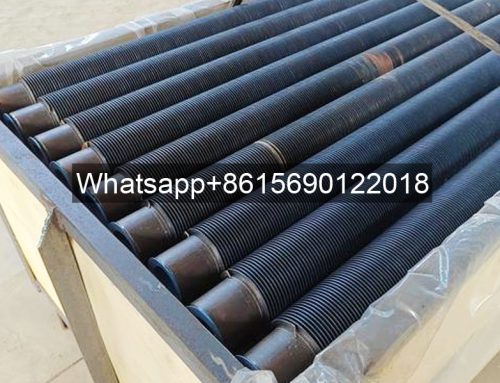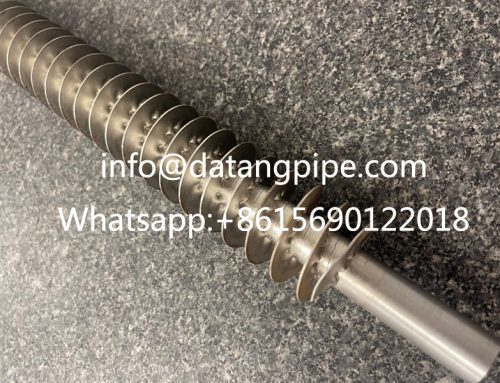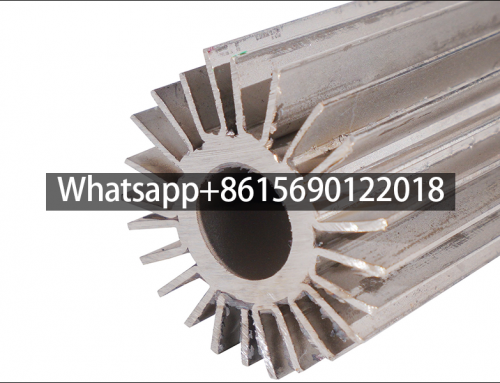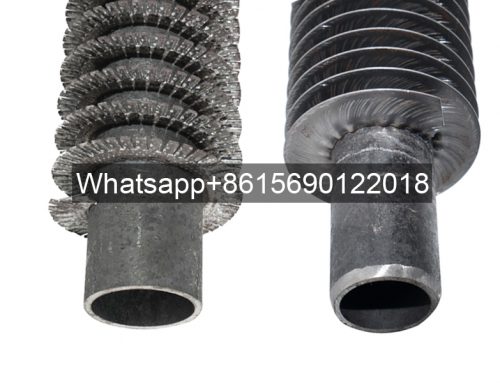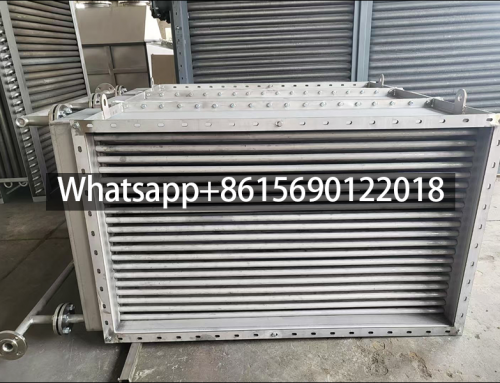Embedded Fin Tube, G KL LL L type Fin Tube Difference
Differences Between G-Type, KL-Type, LL-Type, and L-Type Finned Tubes
The distinctions lie in manufacturing processes, structural characteristics, operating temperature/pressure limits, and application scenarios.
1. L-Type Finned Tube
- Process: Fins are rolled directly onto seamless steel tubes.
- Structure: Monolithic fin-tube integration; low cost but moderate bond strength.
- Temp./Pressure: Max. temp. ≤150°C; max. pressure ≤32MPa.
- Limitations: Poor thermal shock resistance; fins loosen under vibration; unsuitable for wet air coolers.
- Applications: Dry cooling in petrochemical/power industries.
2. LL-Type Finned Tube (Double L-Type)
- Process: Low-fin tube structure via rolling or winding.
- Structure: Better corrosion resistance and tighter fin bonding than L-type.
- Temp./Pressure: Max. temp. ≤170°C; max. pressure ≤32MPa.
- Advantages: Suitable for wet air coolers; superior heat transfer to L-type.
- Limitations: Moderate thermal shock resistance; higher cost than L-type.
3. KL-Type Finned Tube (Knurled)
- Process: Tube surface is knurled before fins are wound mechanically.
- Structure: Fins lock into knurling patterns; robust bond and low thermal contact resistance.
- Temp./Pressure: Max. temp. ≤250°C (up to 280°C per some sources); max. pressure ≤3.2MPa.
- Advantages: Excellent heat transfer; vibration/corrosion resistant.
- Applications: High-temperature dry cooling (e.g., petrochemical/power).
4. G-Type Finned Tube (Embedded/Grooved)
- Process: Grooves are machined into the tube; fins are mechanically embedded.
- Structure: Large contact area; high bond strength; minimal deformation.
- Temp./Pressure: Max. temp. ≤280°C (up to 400°C); max. pressure ≤32MPa.
- Advantages: High thermal efficiency; withstands high temp./pressure; corrosion resistant.
- Limitations: Tube wall thickness ≥1.65mm required for grooving; higher cost.
- Applications: High-temp. processes requiring periodic cleaning (e.g., food drying systems).
Key Differences Summary
| Type | Process | Max. Temp. | Vibration Resistance | Cooling Method | Optimal Use Cases |
|---|---|---|---|---|---|
| L-Type | Direct tube rolling | 150°C | Weak | Dry | Low-cost conventional cooling |
| LL-Type | Low-fin rolling/winding | 170°C | Moderate | Wet/Dry | Wet air coolers, corrosion resistance |
| KL-Type | Knurling + winding | 250°C–280°C | Strong | Dry | High-temp., high-vibration |
| G-Type | Groove embedding | 280°C–400°C | Strong | Dry | High-temp./pressure, cleanable systems |
Additional Notes
- Heat Transfer Efficiency: G-type ≈ KL-type > LL-type > L-type.
- Corrosion Resistance: G-type and KL-type offer better long-term stability due to tighter bonds.
- Cost Efficiency: L-type is lowest cost; G-type/KL-type are pricier due to complex processes.
These differences stem from fin-tube bonding methods and material properties. Selection depends on temperature, pressure, media corrosivity, and vibration conditions.


